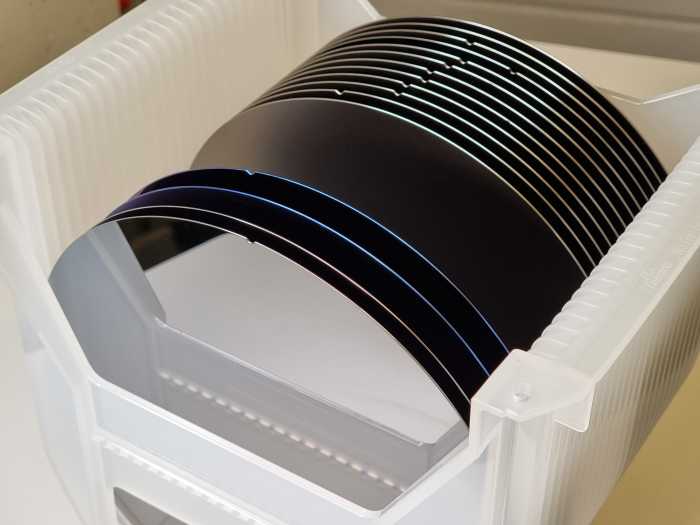Thin film analysis & characterization services

- Fast turnaround times
- Personal service from method experts
- Competitive prices
- Result accuracy guarantee
Questions?
Do not hesitate to ask inorganic materials expert Hande Güneş for more information about our analysis services.
Compositional analysis
Even small amounts of impurities may compromise the functionality of thin films, making detailed compositional analysis crucial. Some of the techniques we offer for determining film composition and identifying contaminants include the following:
VPD-ICP-MS for ppm to ppb level analysis of metallic trace contaminants on silicon wafers and thin films.
LA-ICP-MS for quantitative multi-element analysis with a 0.05 ppm detection limit.
ToF-ERDA for measuring the composition of films with a detection limit of 0.1 to 0.5 at.%. The method can detect all elements and distinguish between hydrogen isotopes.
SIMS and ToF-SIMS for ppm to ppb level impurity and dopant determination, either on the surface of the film or as a depth profile.
TXRF for mapping trace contaminants on the surfaces of full wafers.
Methods like XPS can be used for further analysis of the chemical environment and bonding of each element. We also offer crystallinity analyses with techniques including XRD and EBSD.
VPD ICP-MS
ToF-ERDA measurement
Elemental analysis of solid and liquid samples with XRF
ToF-SIMS measurement
SIMS measurement
TXRF measurement
X-ray photoelectron spectroscopy (XPS)
Prices excluding VAT.

Thickness and roughness determination
The thickness and roughness of thin films influence electrical and optical properties, adhesion, and particle trapping, among other properties. The following are just some of the techniques we offer for the physical characterization of films:
AFM for roughness analysis and imaging of extremely smooth, polished surfaces.
XRR for non-contact thickness, density, and roughness analysis of individual films and film stacks. When combined with GIXRD, information on the crystal structure will also be obtained.
Ellipsometry for measuring the thickness and refractive index of transparent and semi-transparent films and coatings.
Cross-sectional TEM and SEM for imaging thin film cross-sections to analyze thickness and morphology. When combined with an EDX detector, the elemental composition can also be determined.
You can find more information about the measurements through the icons below. Alternatively, you can contact our experts to discuss the technique or combination of techniques most suitable for analyzing your films or wafers.
AFM surface roughness measurement
XRR of thin films or coatings
XRR + GI-XRD of thin films
Ellipsometry measurement
Prices excluding VAT.
Why choose Measurlabs?
Widest range of testing methods – get all your tests done in the same place.
Best laboratories – for every test, we have sourced the best lab for that particular method, which means that you get the most accurate results and the best price.
Personal service – get help from method experts if you are unsure about standards, your testing needs or sample suitability.
Request a quote
Fill in the form, and we'll reply in one business day.
Have questions or need help? Email us at info@measurlabs.com or call our sales team.
